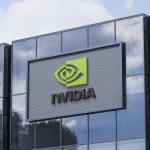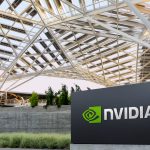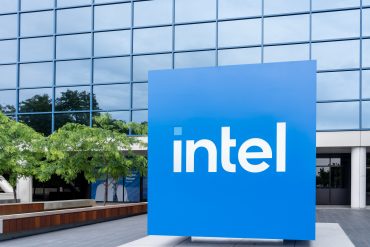
- AI Infrastructure
- Semiconductors
- Strategic Investments
Nvidia’s $100B OpenAI Bet Raises Plenty of Questions
5 minute read

Nvidia’s AI chip investments in customer companies create complex financial dependencies as DOJ investigates market dominance
Key Takeaways
- $100 billion OpenAI investment raises concerns as Nvidia commits massive capital to a key customer, creating what analysts call a “circular” financial arrangement that could backfire if investments cease.
- Revenue growth normalizes to 55% in Q2 FY2026 from previous triple-digit rates, while data center business now accounts for nearly 90% of Nvidia’s $130.5 billion annual revenue.
- DOJ monopoly probe triggers tech selloff as regulators scrutinize Nvidia’s dominant position in AI chips amid string of strategic investments in smaller companies including Intel, CoreWeave, and UK startups.
Introduction
Nvidia faces mounting scrutiny over its aggressive investment strategy as the AI chip leader pours billions into smaller companies that are also its primary customers. The semiconductor giant recently committed up to $100 billion to OpenAI for data center construction, adding to a growing portfolio of investments that analysts warn creates a “messy” business narrative.
Research analysts caution that Nvidia’s fortunes have become “closely tied” to these smaller players. The concern centers on what happens when the investment spree ends, with researchers warning “the day that stops, watch out.”
Key Developments
The OpenAI partnership represents Nvidia’s largest single commitment to date. The investment will deploy at least 10 gigawatts of Nvidia AI systems for OpenAI’s next-generation infrastructure, with the first phase using Nvidia’s Vera Rubin platform expected online in the second half of 2026.
OpenAI will pay Nvidia in cash for the chips while Nvidia takes a non-controlling stake in the company. CEO Jensen Huang describes the planned AI system capacity as equivalent to 4 to 5 million GPUs, doubling the company’s output compared to the previous year.
Beyond OpenAI, Nvidia has declared a $5 billion stake in Intel for joint processor development. The company committed $2.7 billion to support the UK’s AI startup ecosystem and invested $500 million in British data center company Nscale.
Earlier investments include $100 million in CoreWeave during 2023, followed by an additional $250 million in stock. Reports indicate Nvidia agreed to purchase any unsold capacity in CoreWeave’s servers until April 2032.
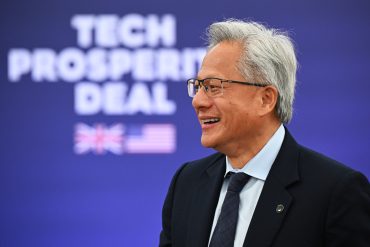
Deal Structure
The partnership is structured as a phased investment tied to infrastructure milestones. Nvidia will provide up to $100 billion in equity and equipment financing as OpenAI brings new gigawatt-scale data centers online, starting in 2026.
Instead of paying upfront for GPUs, OpenAI will lease the hardware over its useful life — estimated at around five years — shifting part of the risk onto Nvidia. This approach allows OpenAI to preserve cash while securing access to tens of billions of dollars’ worth of GPUs needed to train and operate frontier models.
The first $10 billion tranche is expected to be deployed in the near term, supporting construction of the initial one-gigawatt facility in Abilene, Texas. Oracle, already a strategic partner through the Stargate initiative, will lease and operate the facility, while banks are expected to provide debt financing alongside Nvidia’s equity stake.
OpenAI CFO Sarah Friar underscored the rationale: “There is not enough compute. As capacity comes online, we will be more than capable of paying for it with future revenue. Nvidia will get paid as the chips are deployed.”
Market Impact
Despite analyst concerns, Nvidia shares reached a 52-week high this month, rising over 27% year-to-date. The stock demonstrates resilience even as the Department of Justice announces an impending monopoly probe against the company.
The DOJ announcement triggered a significant tech sector selloff across US markets. Ed Yardeni of Yardeni Research attributes the decline to concerns over Nvidia’s monopolistic behavior rather than broader economic weakness.
Nvidia’s market capitalization surpassed $4 trillion in July 2025, making it the most valuable public company. Over 70% of shares are held by institutional investors, indicating continued Wall Street confidence despite regulatory pressure.
Strategic Insights
Vital Knowledge analysts highlight the “circular nature” of Nvidia’s financial arrangements, questioning why the company financially supports key customers if AI demand is truly unstoppable. This strategy creates interdependencies that could amplify both growth and risk.
The investment pattern reveals Nvidia’s attempt to secure demand for its chips by funding the infrastructure that will consume them. Data center revenue now represents 88% of total sales, reaching $115.2 billion in fiscal 2025.
Revenue growth normalization from triple-digit rates to 55% year-over-year reflects the natural result of scaling from a much larger base. Q2 FY2026 revenue hit $46.7 billion, demonstrating sustained momentum despite the deceleration.
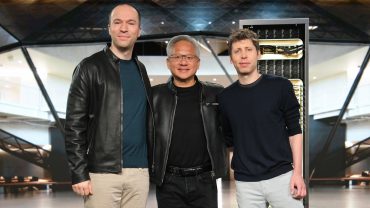
Expert Opinions and Data
Jensen Huang, Nvidia’s CEO, described the OpenAI project as “monumental” and emphasized the company’s technological leadership in AI computing. The Blackwell AI supercomputers generated “billions of dollars in sales in its first quarter” with “amazing” demand, according to Nvidia.
Ed Yardeni warns that Nvidia’s broadening focus complicates its narrative for investors. “It’s becoming harder to pin down exactly what Nvidia’s core growth engine is,” Yardeni said. “Investors like clear stories, and right now, Nvidia’s is getting a bit messy with all the strategic bets it’s making.”
Financial performance underscores both growth and complexity. Fiscal 2025 net income reached $72.9 billion, up 145% year-over-year, with net profit margins above 50%. Free cash flow exceeded $28 billion, supporting continued R&D investment and share repurchases.
Conclusion
Nvidia’s aggressive investment strategy reflects both confidence in AI’s long-term potential and the risks of circular customer relationships. The company’s financial strength enables continued expansion, but regulatory scrutiny and market interdependencies create new challenges.
The semiconductor giant maintains its dominant position in AI chips while navigating the transition from hyper-growth to sustained expansion. Current developments highlight the complex balance between securing future demand and maintaining operational independence in an increasingly competitive market.




